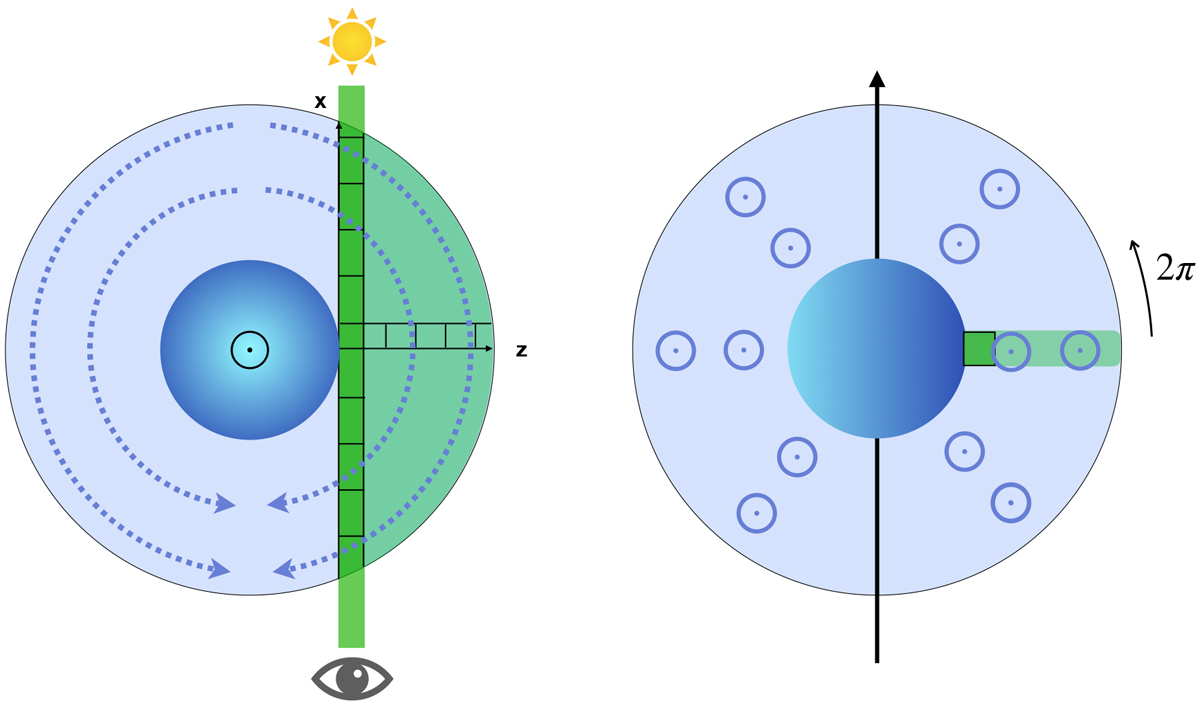Fig. 3

Illustration of the implementation of the day-to-night side wind pattern with a 1D calculation of the atmosphere. A polar view is shown on the left and an equatorial view on the right. The wind is indicated by the dotted blue arrows. Left: extinction coefficient is calculated in altitude along the z axis and then transposed in the x direction along the LOS (in dark green). The LOS is then iterated upward in z until the top of the atmosphere is reached and all values saved in a 2D grid (here visualised as a slice in light green). In each bin of the 2D grid the velocity and the broadened profile are calculated and stored. This is only necessary on one side of the atmosphere due to the symmetry of the problem. Right: calculated slice is then rotated to create the full atmosphere. The line of sight is shown as a dark green box in the main illustration, where the reader is in the position of the observer. Points indicate a flow towards the reader. In the day-to-night side case, the morning and evening limb winds pointtowards the observer and only one atmospheric slice has to be calculated. The slice is then rotated by 2π to create the full atmosphere. In this simplification of the atmosphere, the wind will not go parallel to the equator at all times, but point towards the centre of the night side. This reduces calculation time significantly, given that it reduces the problem from 3D to 2D, with the extinction coefficient only calculated in 1D.
Current usage metrics show cumulative count of Article Views (full-text article views including HTML views, PDF and ePub downloads, according to the available data) and Abstracts Views on Vision4Press platform.
Data correspond to usage on the plateform after 2015. The current usage metrics is available 48-96 hours after online publication and is updated daily on week days.
Initial download of the metrics may take a while.


